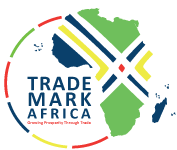East Africa as a region contains some of the world’s most celebrated tourist destinations, from the wildebeest migration through Kenya and Tanzania to the iconic gorillas of Rwanda’s Rwenzori Mountains and Uganda’s Impenetrable Forest. Combine these with the beaches of the Indian Ocean, the highest mountains and longest river in Africa, the deep lakes of the Rift Valley, and an abundance of wildlife (including nearly 2000 bird species), and you have a tourist destination made in heaven.
Yet the number of visitors East Africa (Burundi, Kenya, Rwanda, Tanzania and Uganda) receives annually is a fraction of those of its competitors in Africa, such as South Africa and Morocco. Allan Ngugi of TradeMark Africa (TMA) puts much of this down to cost, including the cost of individual visas to each country. For a family of five to visit just three countries in East Africa, he noted, it would cost them about $750 in visas alone, not to mention inconvenience. Add that to the cost of flights, hotels and safaris then those tourists who want to visit more than one country in East Africa are instantly discouraged.
East Africa Tourism Platform launched
Realising that East Africa had to be positioned as more competitive tourist destination, especially as tourism is a key income earner,an East Africa Tourism Platform (EATP) was launched in April 2012 with the support of TradeMark Africa (TMA). Its mission is to promote intra and inter-regional tourism through advocacy, marketing, skills development, research and information sharing” and it works closely with ministries responsible for tourism, wildlife and transport portfolios, as well as the business and private sectors of the member states.
The Single Tourist Visa is one of EATP’s lobbying successes. It should be noted that putting this as a key lobby issue at EAC level and EATP’s request for inclusion and participation in the Northern Corridor Integration projects specially on this issue helped private sector give input at a technical level and make other recommendations i.e. special category tourism visa for Foreign residents in KE, RW and UG.
One of its recently launched initiatives, in February 2014, is the Single Tourist Visa, which allows visitors to enter Kenya, Rwanda and Uganda on one visa (Tanzania and Burundi are expected to join later). This means, for example, that American tourists who would like to take a beach holiday in Kenya, visit the gorillas of the Rwenzori in Rwanda and go white water rafting on the Nile in Uganda, need apply to only one embassy for a visa, the cost of which is less than three separate visas.
Alternatively the tourists can buy the visa on arrival in whichever country they visit first. Apart from saving money, tourists are also saved the time and inconvenience that comes with buying visas for each country, whether in advance or on arrival. In addition, the visa lasts three months – more than enough time for the serious tourist to take in each country’s attractions.
Promotes East African integration
Stephen Asiimwe is the CEO of the Uganda Tourism Board. “From an integration perspective,” he said, “It was necessary. We are talking of a region with one common market and going into a common monetary union. You cannot have that and yet have difficulty in ease of movement.”
Asiimwe added that the single tourist visa also comes with responsibilities, such as a joint marketing initiative, under which there is the common destination portal, website and other marketing tools such as single destination logo and tagline. “We have the best of the best – the largest concentration of wildlife in one area,” he commented. “It makes sense if you have a single destination so that we complement rather than compete with one another.”
Yamina Karitanyi, Head of Tourism and Conservation at the Rwanda Development Board, is equally positive. “For Rwanda,” she said. “If you look at the current trend, at least half of the packages we fill are add-ons to Kenya and Uganda. Because of that we see this as a smart and efficient move for us to add-on tourists, especially if you’re looking at the region.”
Enlarging the tourism portfolio gives better value
Rwanda is also expanding its tourism product, which will make the single visa even better value. Apart from focusing on gorillas, Rwanda has begun to sell its national parks and is considering the benefits of community tourism, cultural tourism and conference tourism. Additionally, a tourism masterplan has just been completed for Lake Kivu, a deep-water volcanic lake that has huge tourism potential.
“The exposure is there and we feel that it’s the right time,” explained Karitanyi. “It’s the right time to move forward with the product line; it’s the right time politically; it’s the right time because of stability in the region; it’s the right time because we have sold the gorillas and put Rwanda on the global stage. It’s now time to explore the other products and professionalise them.”
Opportunity to learn from counterparts in other countries
While it would at first appear that Kenya has the least to gain from the single visa because it already has diverse attractions, it is also the entry hub for most East African tourists. Agatha Juma, CEO of the Kenya Tourism Federation, which represents the Kenya tourist sector from tour operators to travel agents, sees the single visa as an opportunity for Kenyan tour operators to sell multi-country tours to visitors.
“It will definitely increase and deepen partnerships between Kenyan tour operators and their counterparts in the participating partner states,” she said, “and increase our knowledge of what each destination has to offer. Building and maintaining these relationships,” Juma added, “will also have a social benefit to citizens of East Africa.”
Both immediate and long term benefits
Increased tourism in East Africa will bring other benefits and as the Kenya Tourism Board noted, “enhance the entire tourism value chain,” including economic opportunities for communities, employment and foreign exchange. Allan Ngugi named the less immediate, but equally valuable advantages: improved infrastructure, better service delivery and a more professional approach to tourism. Indeed, the Uganda Tourism Board has recently launched a quality assurance initiative looking at standards and benchmarking against other standards. In the end, Ngugi said, it will encourage investment opportunities and reduce overall poverty – the ultimate objective for TradeMark Africa (TMA).
As Stephen Asiimwe put it: The single tourist visa “offers us an opportunity for repeat visitors; it encourages longer stays which means no revenue into the region; it is a source of income in that the visa cost is shared between the countries; it is also a source of employment. It’s like a buffet, with more items on the dinner table – that’s good for the tourist, it creates employment, it’s also good for us.”















